Cove Inside Drywall Corners Look Cool

Some drywall jobs call for something unique. Here are some pictures of a coved corned tool by Goldblatt. It can give a large range of radiused inside corners depending on the pressure applied.
Large coves require more coats. I usually match the radius of bullnose outside corners. Really makes for a cool look with all the corners radiused, inside and out (wall to wall and wall to ceiling.
The pics show the tool, the corner before, corner during, and corner after the first coat (with a spraypaint can lid to show the radius).
This is just something to try if a customer wants curves.
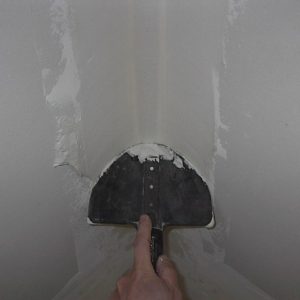
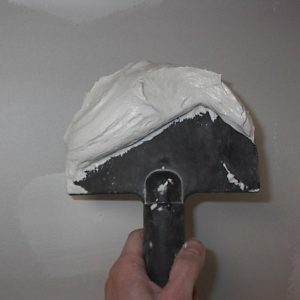
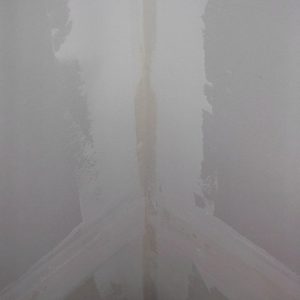
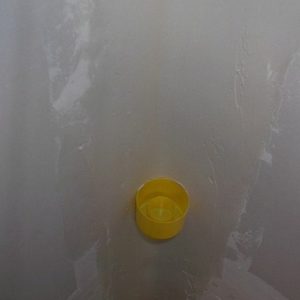
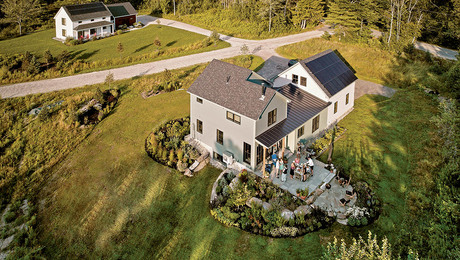

















Replies
That's very interesting. I think I'd like to see that up close. It might be something that would fly in some of the houses I work on.
Is this an original idea of yours, or do they actually manufacture a bead for the corner?
One would assume the base-bottoms could be treated likewise of an outside corner, eh? With a square projection type insert. That'd be interesting to look at as well.
I get paid to do carpentry. That makes me a professional.
If I work on my own house does that make me a DIY?
Not my idea...the cove tool is by Goldblatt. I tape the corners as usual and then do two "cove coats" I've done it on five of six projects now.Same tricks for base. Small 45 across the radius. or corner block. I think they do have inside corner, coved bead now, but the tool works well without it.
man I wouldn't want to do the trim.
* see my post on 'crown and rounded corners' I know - I know.....flex trim.
My first thought, like others here- Wouldn't want to run trim in that house. Actually, some of the 1920s houses around here have coved ceilings, I've always thought that was a great touch. Usually much larger radius though.
zak
yeah...seems to be a 1920's thing - the coved ceiling that is.which I don't mind with straight corners. if it suits the house. But trimming aside, I won't be talked into radius corners. but to each is own, that's just my taste.
however, done nicely I will still give one credit for a skilled job, even it it's not my taste.
You can do a large radius with that tool. "pre-fill" with a 45 degree (2x2 ripped diagonally), rock over with a 2" rip, tape, then mud with the cove tool.
It may not be apparent, but I used a slight cove in these corners. Since tub was curved, I put coves in at ceiling and wall corners.
This is the only pic I have of a finished job where I used this technique. I'll take some more when I get a chance.
I forgot to add...this tool is great for knee wall to sloped ceiling angles and vaulted ceiling ridges can be coved too.
But can it core a apple?
; )
Nice work!
J. D. Reynolds
Home Improvements
How long have you been doing it? I'm curious if cracking is a problem? I assume you're using setting mud?
Trim must be a bitch too.?
I've been using that tool & technique for a about 6 years...no cracks yet. However, I've only done one project a year with coves. Not much call for it, but it can be just the thing for some jobs.I use Rapid Coat, I assume the quick dry formula is closer to a setting compound than regular mud. It seems to crack less. I don't like using setting type muds much.http://www.lafargenorthamerica.com/wps/portal/!ut/p/kcxml/04_Sj9SPykssy0xPLMnMz0vM0Y_QjzKLN4p3NwbJgFjGpvqRyCIG8Y5wgSB9b31fj_zcVP0A_YLc0IhyR0dFAMvdp_E!/delta/base64xml/L3dJdyEvd0ZNQUFzQUMvNElVRS82XzJfRlM!?WCM_GLOBAL_CONTEXT=/wps/wcm/connect/LNA/Products/Gypsum/Finishing_Products/Product_Rapid+Coat/Product_ARapid+CoatWhoa! I need to figure out the tiny url thing.The last two times I did this it was for tray ceilings, so no trim issues. Next time I run base with corner blocks, I'll take pictures.
Rapid Coat ....you need to be in "source view", take note of the pasted link ....
<a href="link address"> and edit this text </a>
There are several shorter URL sites,But this is one.http://tinyurl.com/You can paste the url in it and is will give you a shorter one.Or use this one and it will make a short URL of the current page that you open it over.javascript:void(location.href='http://tinyurl.com/create.php?url='+location.href)